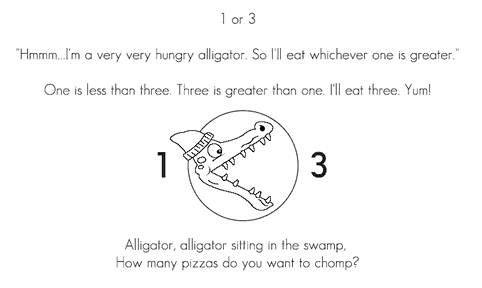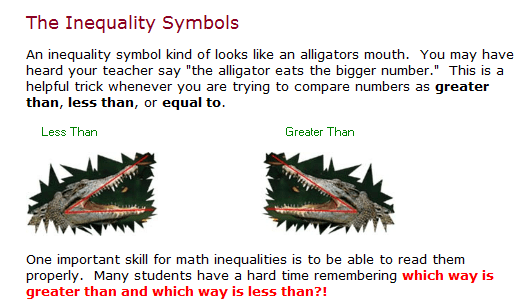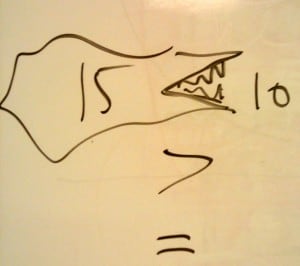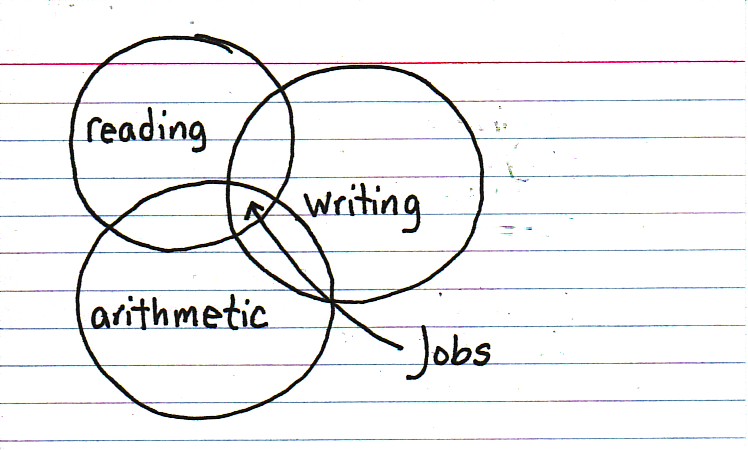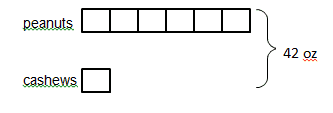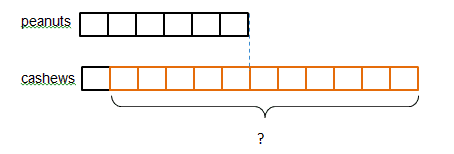My friend Allison (MIT graduate in Mathematics) recently explained why she struggled with inequalities as a child.
To help students remember which way the inequality sign pointed, the teacher drew an alligator mouth. You know the lesson. Here’s an example from songsforteaching.com:
And the song lyrics:
And one from GradeAMathHelp.com
And this simple shortcut or trick was the cause of all of Allison’s troubles with inequalities.
She explained: “everyone knows, the bigger fish eats the small fish”:

